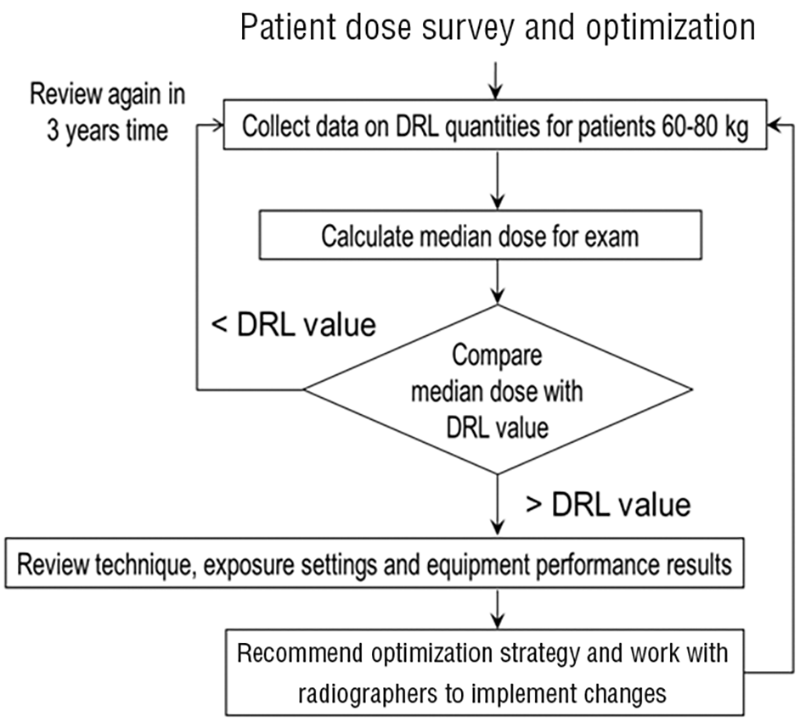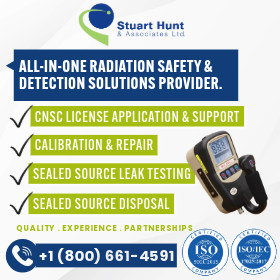ICRP News: Reflecting on ICRP’s past and looking ahead to new challenges
Résumé
La Commission internationale de protection radiologique (CIPR) fonctionne selon des mandats de quatre ans; le mandat actuel a commencé le 1er juillet 2017. Le quatrième symposium international sur le système de radioprotection se tiendra du 10 au 12 octobre 2017 à Paris.
La CIPR célébrera son 90e anniversaire à Stockholm, en Suède, en octobre 2018, mais la commission principale de la CIPR viendra tout d’abord à Québec pour prendre part au congrès annuel 2018 de l’ACRP.
La CIPR a récemment fait paraître les publications : Publication 134: Occupational Intakes of Radionuclides, Part 2, et Publication 135: Diagnostic Reference Levels in Medical Imaging. Des résumés de ces deux publications sont inclus.
As one four-year term of the International Commission on Radiological Protection (ICRP) Main Commission and Committees came to an end (on June 30), and another began (on July 1), it was natural to look back at what has been achieved and ahead at what more needs to be done. This is even truer with ICRP’s 90th anniversary looming on the horizon.
Our official jubilee celebrations will take place in October 2018 in Stockholm, Sweden, where we were founded in 1928. I’m very pleased to say that we will have a chance to celebrate unofficially here in Canada as well. The ICRP Main Commission will meet in Quebec just before the CRPA conference, April 30 to May 3, 2018, and many Main Commission members will stay to be part of CRPA’s conference.
The ICRP Main Commission has met in Canada only three times before—twice in Ottawa, Ontario (in 1962 and 1972), and once in Whiteshell, Manitoba (in 1976). It is a particular pleasure for me to bring the Main Commission back to Canada next year. No doubt there will be a number of occasions to raise a glass in celebration when we all gather in Quebec.
I suspect it’s no coincidence that C. Gordon Stewart, a member of the ICRP Main Commission from 1962 to 1977 and chair from 1969 to 1977, was a Canadian. There have been 11 ICRP chairs since 1928 (12 if you count Rolf Sievert twice; he served in 1928, and again from 1956 to 1962)—four British, three Swedish, one French, one American, one Argentinian, and one Canadian. It is also no coincidence that of the nine scientific secretaries who served before me, the only Canadian, David Sowby, served from 1962 to 1985. Canada was clearly one of the leading nations in the radiation protection world in those decades.
Turning your attention to more current events, we should have published two more issues of the Annals of the ICRP by the time you read this: Publication 134, Occupational Intakes of Radionuclides, Part 2, and Publication 135, Diagnostic Reference Levels in Medical Imaging. Abstracts for both are below.
Publication 134 has been eagerly awaited as the first set of internal dose coefficients based on the latest radionuclide emissions, radiation and tissue weighting factors, voxel phantoms, and biokinetic models. Occupational Intakes of Radionuclides, Part 1 described the methodology, and Occupational Intakes of Radionuclides, Parts 2 to 5 provide the numbers.
Publication 135 provides important practical guidance on the setting and use of diagnostic reference levels, an important part of radiological protection that helps ensure high-quality clinical practice worldwide.
You’ve heard it before (I hope), but I can’t end this piece without reminding you, yet again, that our 4th International Symposium on the System of Radiological Protection will be held in Paris, France, October 10 to 12, 2017, in conjunction with the 2nd European Radiological Protection Research Week. It is sure to be THE international Radiation Protection event of 2017. You can find more information at www.icrp-erpw2017.com.
ICRP Publication 134, Occupational Intakes of Radionuclides: Part 2
The 2007 Recommendations of the International Commission on Radiological Protection (ICRP) introduced changes that affect the calculation of effective dose and implied a revision of the dose coefficients for internal exposure that were published in the Publication 30 series and in Publication 68. In addition, new data are available that support an update of the radionuclide-specific information given in Publication 54 and Publication 78 for the design of monitoring programs and retrospective assessment of occupational internal doses. Provision of new biokinetic models, dose coefficients, monitoring methods, and bioassay data were performed by Committee 2, Task Group 21 on internal dosimetry, and Task Group 4 on dose calculations.
A new series, the Occupational Intakes of Radionuclides (OIR) series, will replace the Publication 30 series and Publications 54, 68, and 78. Part 1 of the OIR series has been issued as Publication 130, Occupational Intakes of Radionuclides: Part 1, which describes the assessment of internal occupational exposure to radionuclides, biokinetic and dosimetric models, methods of individual and workplace monitoring, and general aspects of retrospective dose assessment.
Subsequent publications in the OIR series (Parts 2–5) will provide data on individual elements and their radioisotopes, including
- information on chemical forms encountered in the workplace;
- a list of principal radioisotopes, their physical half-lives, and their decay modes;
- the parameter values of the reference biokinetic model; and
- data on monitoring techniques for the radioisotopes encountered most commonly in workplaces.
Reviews of data on inhalation, ingestion, and systemic biokinetics are also provided for most of the elements.
Dosimetric data provided in the printed publications of the OIR series include tables of committed effective dose per intake (Sv per Bq intake) for inhalation and ingestion, tables of committed effective dose per content (Sv per Bq measurement) for inhalation, and graphs of retention and excretion data per Bq intake for inhalation. These data are provided for all absorption types and for the most common isotope(s) of each element.
The electronic annex that accompanies the OIR series contains a comprehensive set of committed effective and equivalent dose coefficients, committed effective dose per content functions, and reference bioassay functions. Data are provided for inhalation, ingestion, and direct input to blood. The present publication provides the above data for the following elements: hydrogen (H), carbon (C), phosphorus (P), sulphur (S), calcium (Ca), iron (Fe), cobalt (Co), zinc (Zn), strontium (Sr), yttrium (Y), zirconium (Zr), niobium (Nb), molybdenum (Mo), and technetium (Tc).
ICRP Publication 135, Diagnostic Reference Levels in Medical Imaging
The International Commission on Radiological Protection (ICRP) first introduced the term diagnostic reference level (DRL) in Publication 73. The concept was subsequently developed further and practical guidance was provided in 2001.
DRLs have been proven to be an effective tool that helps optimize protection of patients from medical exposure during diagnostic and interventional procedures. However, with time it has become evident that additional advice is needed. Some of the issues include
- definitions of the terms used in previous guidance,
- determination of the values for DRLs,
- appropriate interval for re-evaluating and updating these values,
- appropriate use of DRLs in clinical practice,
- methods for practical application of this tool, and
- application of the DRL concept to newer imaging technologies.

Publication 135 is intended as a source of additional information and guidance on these issues, including the clarification of some terminology. In addition, the report recommends quantities for use as DRLs for various imaging modalities and provides information on use of DRLs for interventional procedures and in pediatric imaging. It suggests modifications in the conduct of DRL surveys that take advantage of automated reporting of radiation dose-related quantities and points out the importance of including information on DRLs in training programs for health care workers.
The target audience for this report includes national, regional, and local authorities; professional societies; and staff at facilities where ionizing radiation is used for medical purposes. A full set of the Commission’s recommendations is provided.
 Chris Clement
Chris Clement
Chris Clement, a certified health physicist, has worked in radiation safety since the 1980s, first on environmental restoration projects, then with the Canadian Nuclear Safety Commission (CNSC), where he was the director of radiation protection when he left in 2008. He is currently the scientific secretary of the International Commission on Radiological Protection (ICRP).
Chris Clement, spécialiste de radiophysique médicale sanitaire agréé, travaille en radioprotection depuis les années 1980, d’abord dans des projets de restauration environnementale, puis avec la Commission canadienne de sûreté nucléaire, où il portait le chapeau de directeur de la radioprotection à son départ en 2008. Aujourd’hui, il occupe le poste de secrétaire scientifique de la Commission internationale de protection radiologique (CIPR).


 Chris Clement
Chris Clement

